Extracting graphite rods from a lantern battery
I took apart one of those big lantern batteries probably some time in the late 1970s because I needed a graphite rod for stirring molten metals. Graphite is good because metal doesn't stick to it, it doesn't contaminate the metal, and it retards oxidation to some extent.
In order to show you how it's done, I took apart another one in the summer of 2002 and photographed the process. You start with an ordinary (not alkaline) lantern battery (6V will give you 4 electrodes, 12V will give you 8), and a pair of diagonal cutters (or whatever tool you have handy):
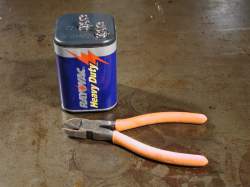
It makes no difference if the battery is new or all run down, the graphite is not effected by the discharging of the battery. First cut off the spring terminals (to reduce the chance of short circuits) and peel off any labels so you can see what you're dealing with:
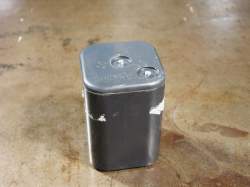
Every brand is no doubt a little different, but all of them will contain four (or eight) individual metal cans. The plastic case around them is just to hold them in place, and you can break it open any way you like:
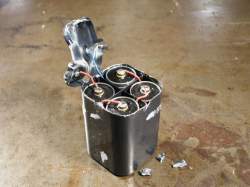
And take out the individual (1.5V zinc-carbon) cells:
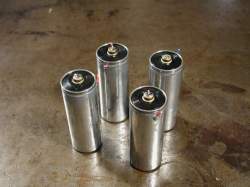
(A clever and foresightful person would not clip the wires off like I did, but rather leave them and the metal caps on as a convenient way to make connections to the electrodes.)
Use the diagonal cutters to open up the crimped rim around the top, freeing the disk that closes the top, then pull it and the electrode up and out of the goop:
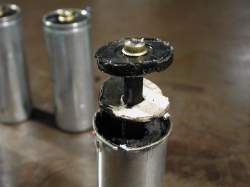
Some brands may be harder to do than the one I had, but in my case the electrode pulled out easily and cleanly, and could easily be separated from the disk. I pushed the disk back down into the can to form a convenient container for disposal. The goop is of no interest here. Clean the electrodes off with paper towel and sandpaper to get a nice clean graphite surface:
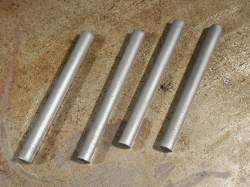
Even if you buy a brand new battery, you're paying about one dollar per rod, which is cheap compared to buying graphite rods from a chemical or foundry supply company. They're probably not very pure, but they work great for things like isolating hydrogen or stirring molten metal.
|
|